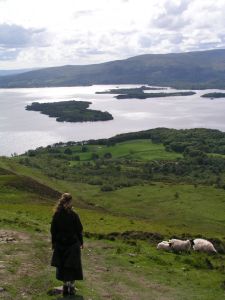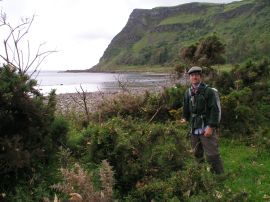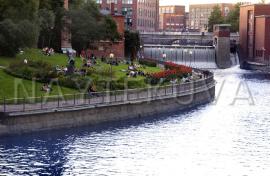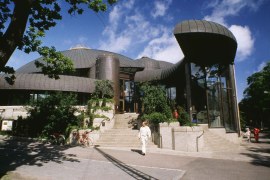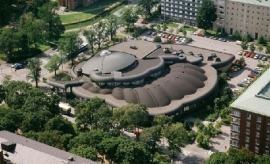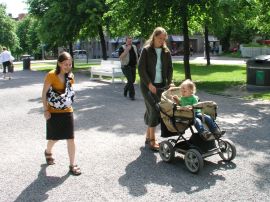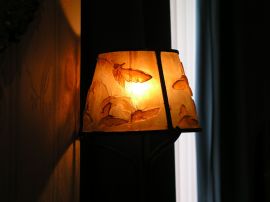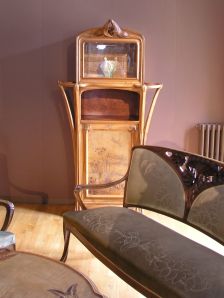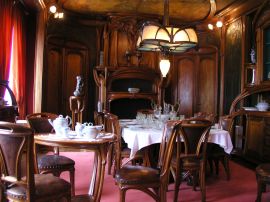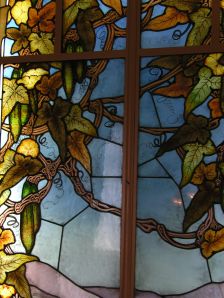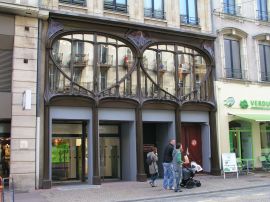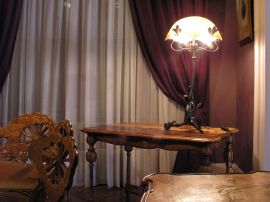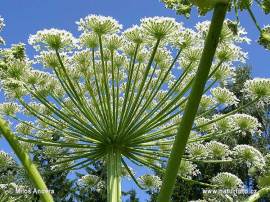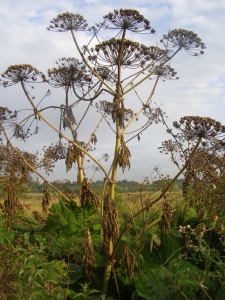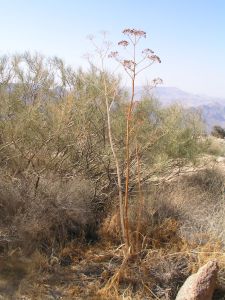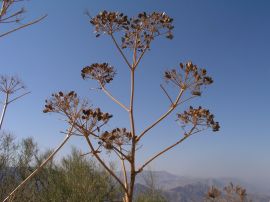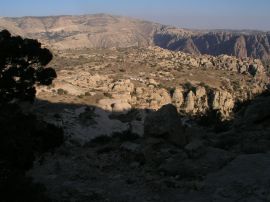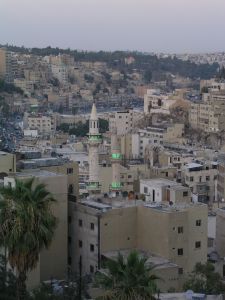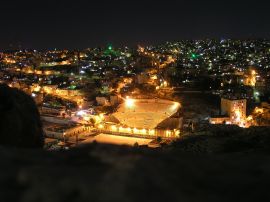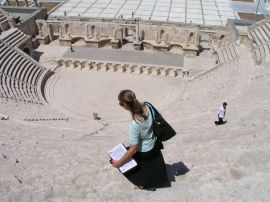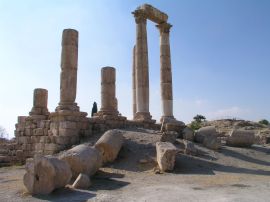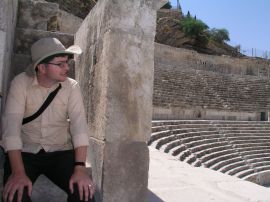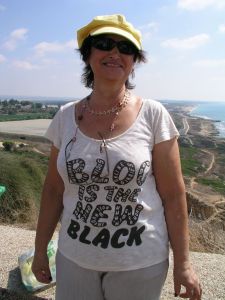This Is Not a Postcard
Tales of 2 people on 3 continentsArchive for Scotland
Listen to the minor cords
When we try to pick out anything by itself we find that it is bound fast by a thousand invisible cords that cannot be broken, to everything in the universe. (John Muir, 1869)Part I: Birds of a Feather
One of our delights while traveling consists of finding connections between presumably unrelated places. It’s like coming across a sparkling line of spider web that you have to tilt your head just right to see. Once you see it, others magically come into view.
I’ll give you an example:
During our time in Scotland, we heard every so often about a critically endangered bird called a capercaillie (pronounced “kayper-kaylee”).
The elusive capercaillie is the largest grouse in the world, inhabiting the (similarly endangered) forests of the Scottish Highlands.
I had never heard of a capercaillie before coming to Scotland, but James recognized the name as the name of a band that performs from time to time on NPR’s “Thistle & Shamrock.” It’s an apt name for a Scottish band, in fact, because traditional Scottish dances are called ceilidhs (“kaylees”), otherwise known as “contra dances” in the US.
It’s also apt because the capercaillie itself dances in an elaborate courtship display.
Up until the late 1700’s Scotland was still largely covered with Scots pine, the preferred habitat for capercaillies. Then a combination of factors including massive deforestation as well as the onset of the “Little Ice Age” conspired to wipe the capercaillies out.
Today there are less than 1,000 capercaillies left in Scotland, largely confined to a patch of land of just 11 square miles. Some experts say the real population figure is probably closer to 500. In 2009, a census of the Loch Lomond population counted just five individual birds, a decline from the 32 individuals counted ten years earlier.
James and I snuck up on a small group of capercaillies while we were hiking on the Isle of Mull. They explode out of their hiding places like wild turkeys, scaring the bejeezus out of you.
>> fast forward to Finland
Our very favorite city in Finland was Tampere, once known as the country’s industrial “Manchester.” Tampere has also historically been a hotbed for labor and socialist organizing.
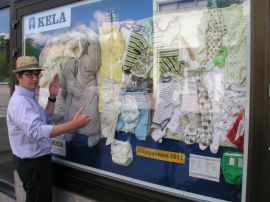
James shows off the package that all Finnish parents receive for free whenever they have a baby. Long live Scandinavian socialism!
These days, Tampere is a beautiful, vibrant town that has reinvented its old factory buildings into gorgeous downtown centerpieces.
It is also home to a great university that I profiled on my Parlez-Vous Green Campus? website.
When we first arrived in Tampere, one of our couchsurfing hosts took us on a walking tour of the major sights, including their fantastic public library designed by a couple of Finnish architects named Reima and Raili Pietilä.
The library has earned itself an endearing nickname: “Metso.”
Why? Because from above, it seems to resemble a beloved local bird by the same name.
Despite her superior English language skills, our host Johanna had to admit that she was at a loss to translate.
She took us inside to see a stuffed version of the bird in a case in the lobby. Before I even saw it, I knew what it would be.
Life is just like that sometimes.
After doing a bit of further research, I learned that the capercaillie actually became extinct in Scotland back in 1785. Today’s population was bred from capercaillies brought over from… the Scandinavian peninsula.
Part II: Burning down the Caucasus
Whenever I go to Nancy, France where my mother was born and raised, I make a pilgrimage to the Musée de l’Ecole de Nancy. This last visit was particularly special because I was with my parents who were in France celebrating my mother’s 70th birthday and their 50th wedding anniversary.
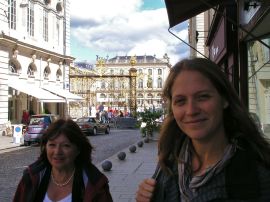
With my maman in her home town. Notice Place Stanislas in the background, Nancy's magnificent central square.
The Ecole de Nancy museum showcases the incredible craftsmanship and creativity of local artists who contributed to the founding of the Art Nouveau movement at the turn of the last century such as Emile Gallé, the Daum brothers, Louis Majorelle and René Lalique.
The designs were always based on natural elements – plants, flowers, insects, fish.
One of their favorite motifs was a highly invasive plant called “ombelle” in French (Heracleum mantegazzianum). In English, this plant goes by a somewhat less refined common name: Giant hogweed.
Hogweed is phototoxic, meaning that its sap causes severe blisters to appear on skin that has come into contact with it. It was introduced from the Caucasus region (Central Asia) as an ornamental in Britain and later France, and it has since made itself highly unwelcome, displacing native species and terrorizing unsuspecting victims who have unwittingly reached out to touch it.
ABC News described hogweed just last year as the “summer plant from hell.”
Despite its obvious shortcomings, giant hogweed was showered with affection by the artists in Nancy. In fact, it is even planted in the gardens surrounding the museum, though new shoots are systematically removed – with gloves on.
>> fast forward to Jordan
We came across this fine specimen in the middle of the Dana Nature Reserve. I would have stood next to it for scale, but I was scared to get anywhere near it.
James and I have a theory about how this plant ended up here. But first let’s back up a little and talk about Jordan.
Jordan is an absolutely fascinating country that has been home to many different cultures and peoples throughout its history. And still is.
Its capital Amman is a sprawling, cream-colored city whose homes, mosques and staircases spill over tightly packed hills.
Amman started out as the capital of the Ammonites, referred to in the Bible as Rabath-Amman. King David slaughtered Uriah the Hittite here.
[At which point you say to yourself, “Ah, of course! Uriah the Hittite. I always wondered how he died.”]
Later, the Romans renamed the city Philadelphia. That was back when it was one of the most important centers of power in the Roman Empire. Its amphitheater seated 5,000 spectators at a go.
Amazingly, by 1900 Amman had shrunk to a real 2-horse town; the city counted just 400 total inhabitants.
Most of its residents at that time were Muslim Circassians. The Circassians had been expelled from their homeland by the Russians at the end of the Caucasian War in the 19th century. Some early Circassian settlers took up residence inside the ruins of Amman’s Roman amphitheater.
Back to our theory about the hogweed: Did the Central Asian Circassians drag that infernal plant along with them as a bitter reminder of home? Perhaps they didn’t want to feel too sentimental about the motherland they had left far behind. Or maybe they planted it as a defensive measure against the Russians should they ever come back to town.
Sure, why not? This theory was sounding better and better all the time.
Unfortunately, we later learned that the plant in Jordan is native to the Mediterranean region: Ferula communis, aka “giant fennel.”
Family? Umbelliferae. Also the family of the giant hogweed.
Close enough.
Folks, don’t forget to request a real, live postcard before you leave this page! We love sending them to you. Also, there are loads and loads of pictures from France on Flickr to look at if you feel so inclined.p.s. Blog is the new black.
Scotland: A tale of death and life
I. Appalachia, UK
There’s nothing particularly normal about the Scottish Highlands.
The wide open landscape of rolling hills, dotted with sheep and the occasional wild goat. The heather, the grasses.
The bogginess.
The bare and craggy peaks. The ruins of old farmhouses.
As we climbed over hill and dale along the West Highland Way, I kept being struck by the feeling that something was amiss. Sad, even.
Scots might say those were the echoes of an exceedingly bloody and painful history. Probably true.
But there was something else.
Whither the trees? Wither the forest?
Whither the creatures?
Whither the… people?
Whither the life?
To me, it looks apocalyptic. Like a vision of what West Virginia will be once the coal companies really get their way.
Naked mountains. Mountains that seem to ache from the pain of prolonged exposure. Mountains that continue to suffer the daily indignity of millions of tiny herbivore-inflicted bites.
I mean, these mountains look raw.
The puny little isolated stands of planted pine only serve to punctuate the overall effect. And there’s nobody living out here. It’s just miles and miles and miles of empty until you hit a little farmhouse, or a guest cottage.
That’s about as much as James or I knew about it all the while we walked along the West Highland Way. We spent seven days covering about 95 miles on foot, camping every night except the last which we spent in a hostel.
Once we got off the trail I started investigating further. It’s weird actually how little anyone tells you about the history of the landscape here. Either through brochures, or informational signs, or tourist offices, or even in conversation. It’s all just about the aesthetic appreciation.
Ok, so here’s the deal:
The trees in Scotland were all chopped down ages ago. So long ago, in fact, that no one really knows what the forests even looked like to begin with. Paleoecologists have attempted to reconstruct past ecosystems based on fossilized remains (many of which were preserved in peat bogs) as well as written accounts, but it’s still mostly conjecture.
The earliest farmers arrived in Scotland about 4,000 years ago and began clearing the land. By the time the Romans arrived, over half of all the native forests had already been felled.
Beginning in the 18th century, the Highland forests were exploited, burned and otherwise reduced to a greater extent than ever before.
When the trees were lost, so were the animals. Lynx, wolves, giant wild cattle (known as aurochs), boars, bears, salmon, elk and beavers all thrived here once upon a time.
What we are now left with is a highly degraded ecosystem, unable to successfully regenerate even when left to its own devices. Most all of the arable soil has eroded into the sea. The only sizable patches of forest are mini-plantations of introduced species like Sitka spruce which are unceremoniously clear cut when mature.
Certain creatures, of course, have found success in this “new” Scotland: the hunted species, namely red deer and grouse, and the heathers and grasses with provide them with habitat and sustenance. The domesticated grazers –sheep and some cattle – have also fared well.
But the richness and complexity of this ecosystem (if you could even call it that anymore) has been drastically reduced.
What James and I found really interesting after some more reading was the historical relationship between land ownership patterns and land use in Scotland. An environmental scientist named Richard Hobbs wrote a particularly interesting article on this topic entitled Ecology, history, culture, economics, politics and change (ain’t that a mouthful).
Here, he discusses the changes that took place before and after the Jacobite Rebellion in 1745, which ended in defeat for the Highlanders at the Battle of Culloden (note: citations have been removed).
The clan, or family, system was the main social system within which the clan owned lands and the clan chief, a hereditary position, was responsible for the welfare of clan members who farmed smallholdings and tended cattle, in return for military service when required by the chief.
After Culloden, many of clan lands fell into the hands of non-hereditary chiefs and at the same time the clan chiefs grew more attracted to more sophisticated ways of life which were expensive to maintain. The clan members who had previously been secure within the clan system now found themselves without any security of tenure. Numbers on the land were also increasing because of the advent of the potato as a reliable staple food.
The need to pay for expensive lifestyles led to an expansion of the few industries which were capable of making reasonable profits from the highland landscape. These were kelp, or seaweed, harvesting at the coast and extensive sheep grazing inland. Extensive sheep grazing increasingly replaced the more intensive cattle husbandry previously practiced and was incompatible with the continued presence of large numbers of small farm holdings. The fact that the farmers had no security of tenure allowed landowners to remove the farming communities from their lands, at first from the inland areas to the coast and then increasingly away from Scotland altogether.
A long period of systematic depopulation of the Highlands began in the 1750s and continued into the late 1800s, hurried along by other factors such as the potato famine which occurred in the mid-1800s. This process, known as the Highland Clearances, resulted in the forced eviction and emigration of thousands of people, many of whom were transported to the United States, Canada and elsewhere. The message from landowners was clear. Buchanan quotes from Lady Matheson, speaking in Lewis in 1888, well towards the end of the clearance period, to tenant farmers: “The land under sheep and deer is my property and I can do with it what I like.”
When demand for Scottish wool decreased and the land lost its commercial importance, wealthy English families from the south turned the Highlands into their high-end hunting playground. Romantic era depictions of the landscape commissioned during this period portrayed the region as a wild and empty place. This is the characterization we are most familiar with today.
On a positive note, I’ll leave you with a picture of a small community forest in the town of Tyndrum where native species are being propagated – and deer and sheep are being kept out, at least until the trees have a chance to establish themselves.
The forest is dead; long live the forest!
II. Rat-ho!
We began and ended our visit to Scotland in Edinburgh, the Scottish capital. We had the great pleasure of being hosted by a Canadian couple there named Brian and Sharilyn Clowes. We met them through Couchsurfing.
Sharilyn and Brian live in a little canal town called Ratho which is located about 45 minutes by bus from downtown Edinburgh.
James took to calling the town “Rat-ho” in honor of Rathole, his sister Molly’s beloved childhood Monchichi.
There is one pub in Ratho, the Bridge Inn, which you can see in the above photo. This was the scene of one of our most memorable Scottish experiences – single malt whiskey tasting followed by an appearance by a giant (i.e. room-sized) inflatable elephant. A gag engineered by some (seriously tanked) pub regulars.
We didn’t have the good sense to take any pictures, actually. But through the magic of Facebook, a photo of the event in question appeared online the next day. What happens in Ratho does not stay in Ratho!
Sharilyn and Brian enjoy a lifestyle that seemed familiar to us. They get local produce delivered to their home once a week. They only use hot water in the shower. They have three chickens in their backyard that produce one egg a day each – when they’re not being broody. They bike and walk to work – no car.
Brian is an ironsmith, a real craftsman. He was kind enough to take us to the forge on a Sunday and teach James how to make a leaf out of a rod.
What’s interesting about this forge where Brian works is that they do really creative contemporary stuff, not just repairs of historical ironwork. Here’s a beautiful little gate that was recently completed by some of his colleagues, for example.
Sharilyn works at a world-class climbing facility that just happens to be located near the little town where they live.
The structures in the photo above are about 5 or 6 stories high. This place also functions as a sort of community center – Sharilyn is a crafts instructor at “The Honey Pot” ceramics studio.
Here are a few images of a walk we took from Ratho up the Union Canal with another one of Sharilyn and Brian’s couchsurfers, a cyclist named Ryan from upstate New York. Notice how the canal actually crosses bridges over highways and gorges. Also, May was (invasive) rhododendron season in Scotland – they were spectacular.
Sunny days are a bit of a rarity in these parts. You can tell from the way that the sheep loll around like ragdolls as soon as it hits.
One last nugget on the Scots – they are big fans of traditional dances called ceilidhs (pronounced “kay-lees”). We were lucky enough to be invited to one in Edinburgh the night after we arrived. Guess what? They are exactly like our contra dances. Exactly! Same music, same dances, same crowd. It’d nice to see that this particular tradition has been so dutifully maintained across space and time. I suppose that is another outcome of the Highland Clearances, albeit a more positive one!
Loads more fun pictures at our Flickr site of Edinburgh, Ratho, the West Highland Way, as well as Oban and the Isle of Mull in the Inner Hebrides. And don’t forget to request a postcard before you close this page!
Love, Sonia
p.s. I still like the blog format that we chose but the one thing I really don’t like about it is the fact that the photos need to be relatively small in order to fit into that first column. Do click on them as you read so that you can see them in a larger format. They’re so much more interesting that way.

